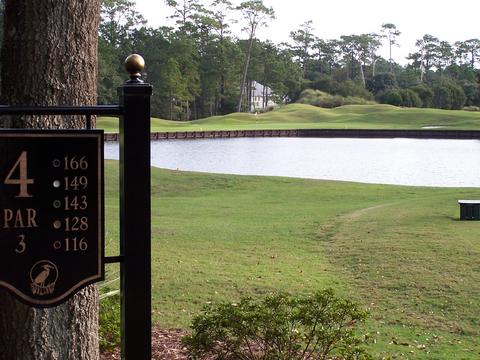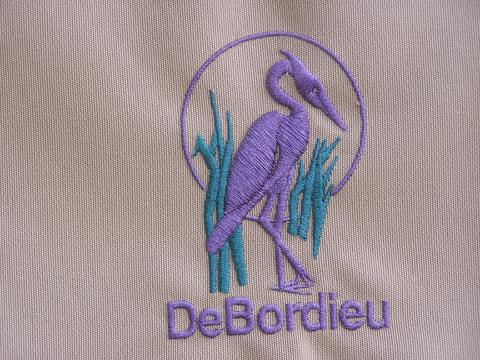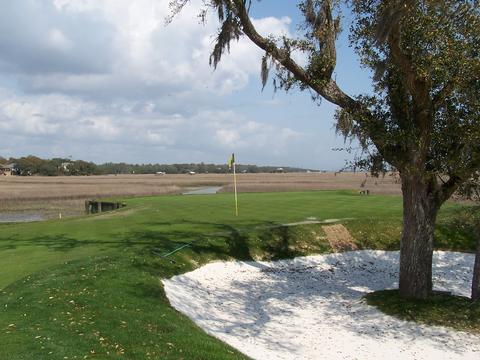
They may not be building more railroads, but Pete Dye is keeping the railroad tie manufacturers in business. He uses them to advantage at DeBordieu.
NOTE: A technical glitch sent this two part review past the front page of the site in the last two days and to the reviews section. We didn't intend that. For those who may have missed it, we include it here today (and the second part tomorrow) and apologize to others for any duplication.
They have torn down the locally famous boardwalk pavilion in the golf supermarket of Myrtle Beach. No more roller coasters, cotton candy and cheesy door prizes for knocking down a few bottles. But that's not quite enough to take the honky tonk out of the southeast's Coney Island. There is still plenty of neon both on the beach and off, but for thousands of golfers each week, it is a small price to pay.
If you are looking for a permanent place within striking distance of 120 golf courses, the best choice is 30 minutes south of Myrtle Beach, in the towns of Litchfield, Murrells Inlet or Pawleys Island. You will have easy access to the beach and the Intra-Coastal Waterway, and the collection of golf courses are consistently ranked among the best on the Grand Strand. So too are the restaurants; some rival those in foodie-town Charleston for quality and originality.
The best golf course communities on the South Strand are DeBordieu Colony, Pawleys Plantation, The Reserve at Litchfield Beach and Wachesaw Plantation, although there are numerous other choices to fit virtually every budget. DeBordieu, the farthest south, features a Pete Dye course and the most expensive homes in the area, owing to its location on the ocean. Homes facing the Atlantic have sold for upwards of $5 million, but just a few hundred yards inland, you can still find a single-family dwelling for under $1 million. The Dye course is not his most revered and, disappointingly, none of the holes approach the ocean (although you can hear it and  smell it, and the breezes make the otherwise open routing a bit of a challenge). But the links-style course stands in nice contrast to some of the parkland courses in the area. DeBordieu is just five miles from the charming old southern town of Georgetown, whose Rice Paddy restaurant, in an old bank building, is one of the best in the area.
smell it, and the breezes make the otherwise open routing a bit of a challenge). But the links-style course stands in nice contrast to some of the parkland courses in the area. DeBordieu is just five miles from the charming old southern town of Georgetown, whose Rice Paddy restaurant, in an old bank building, is one of the best in the area.
Pawleys Plantation, the only one of the four communities whose golf course is not private, was opened in the late 1980s and is a good example of how a residential community can double as a quiet resort community. A nice mix of condominium units and single-family homes, Pawleys Plantation runs from Route 17 to the marsh that separates the mainland from the beach. Single-family homes rarely exceed $1 million, except for those with spectacular marsh views. Condos start around $300,000, but the best bargains might be the "patio" homes, set on just ¼ acre, which start in the mid $300s. From Jack Nicklaus' dramatic marsh holes on the back nine, you could see the ocean if it weren't for the three rows of houses on Pawleys Island, America's oldest beach resort community. But you can certainly feel the effects. The course is tough, long and necessitating high-entry approaches to the well-trapped greens. The short 13th hole, about 125 from the men's tees and virtually surrounded by marsh, may be a tougher challenge than #17 at Sawgrass. The green is tiny and hard, and when the wind blows and the tide is out, the intimidation is intensified by a view of hundreds of golf balls lying in the muddy bog below.
Coming tomorrow: The Reserve at Litchfield Beach (Greg Norman) and Wachesaw Plantation (Tom Fazio), as well as the fine array of daily fee courses on the South Strand.
We maintain an excellent network of real estate agents throughout the southern U.S. The are knowledgeable about all the golf course communities in their areas. One of our pre-qualified agents can help you cut through all the marketing hype and see any houses you want...at no cost or obligation to you. Contact us if we can help.

The short par 3 13th at Pawleys Plantation, with its tiny green, has ruined many a round.























